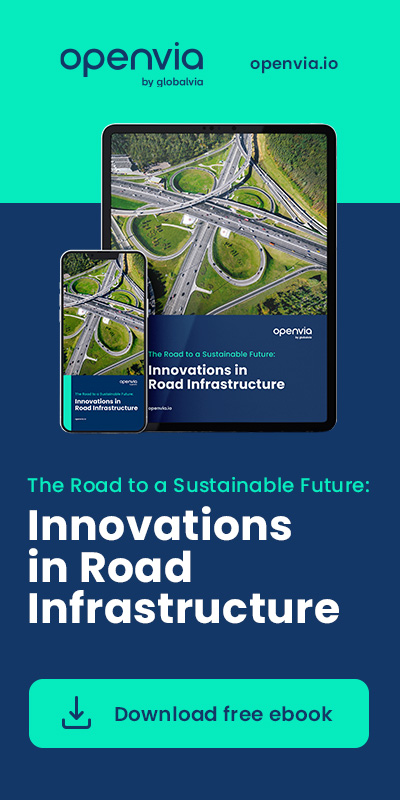Integrating smart mobility into highway management is pivotal in revolutionizing our transportation systems. By leveraging advanced technologies and data-driven solutions, smart mobility aims to enhance the efficiency, safety, and sustainability of our road networks. This integration not only addresses the growing challenges of traffic congestion and environmental concerns. But also paves the way for a more connected and responsive infrastructure.
The Importance of Smart Mobility in Highway Management
Smart mobility encompasses the use of innovative technologies to improve transportation systems. In the context of highway management, it involves integrating intelligent transport systems (ITS), connected vehicles, and data analytics to optimize traffic flow, reduce congestion, and enhance road safety. This approach shifts the focus from traditional infrastructure expansion to intelligent solutions that make existing roadways more efficient and safer.
One of the primary goals of smart mobility is to reduce traffic congestion. Which not only improves travel times but also decreases fuel consumption and emissions. By implementing real-time traffic management and control systems, highway operators can monitor and manage traffic conditions more effectively, leading to smoother and safer journeys for all road users.
Digital Tools Enhancing Operations and Road Safety
The integration of digital tools is central to the success of smart mobility initiatives. These technologies enable highway authorities to collect, analyze, and act upon vast amounts of data, leading to more informed decision-making and proactive management strategies.
- Intelligent Transport Systems (ITS): ITS integrate technologies like sensors, communication networks, and data analytics into transportation infrastructure to monitor and manage traffic flow, reduce congestion, and enhance road safety. They provide real-time traffic information, enabling drivers to make informed decisions and avoid congested routes. Moreover, ITS supports efficient use of transport infrastructure through dynamic traffic signal control, intelligent parking management, and automated toll collection.
- Connected Vehicles: Vehicles equipped with internet access can share data with other devices both inside and outside the vehicle. This connectivity enhances the driving experience by providing real-time traffic updates, route suggestions, and in-vehicle entertainment. Connected vehicles are not just about driver convenience; they also enhance safety. With features such as collision avoidance systems and automatic emergency calling, connected vehicles can help prevent accidents and save lives.
- Data Analytics and Artificial Intelligence (AI): Advanced data collection tools revolutionize traffic management. CCTV cameras monitor traffic conditions and provide real-time visual data, allowing traffic managers to identify congestion and incidents. Radar technology measures vehicle speed and detects traffic flow patterns, aiding in optimizing traffic signals and improving safety. GPS tracking offers precise vehicle location data, enabling cities to analyze travel times and route efficiency, thereby reducing congestion and enhancing traffic flow. Loop detectors embedded in roadways count vehicles and measure occupancy, supplying essential data for traffic signal optimization. Integrating these tools into traffic management systems enables proactive traffic management and reduces emissions.
- Mobility Platforms: These platforms serve as centralized hubs that aggregate data from various sources, including vehicles, infrastructure, and weather services. By analyzing this information, mobility platforms can provide real-time updates to drivers, suggest optimal routes, and predict traffic patterns, thereby enhancing the overall travel experience.
Challenges in Integrating Smart Mobility Solutions
While the benefits of integrating smart mobility into highway management are substantial, several challenges must be addressed to ensure successful implementation:
- Infrastructure Upgrades: Establishing adequate infrastructure for smart mobility can be a significant challenge. This involves creating intelligent transport networks, upgrading existing infrastructure, and setting up charging systems for electric vehicles.
- Data Security and Privacy: The extensive data collection inherent in smart mobility raises concerns about data security and privacy. Protecting this information from cyber threats and ensuring user privacy are critical to maintaining public trust and compliance with regulations.
- Interoperability: With numerous stakeholders involved, including government agencies, private companies, and vehicle manufacturers, ensuring that different systems and technologies can work together seamlessly is a complex task. Standardization and collaboration are essential to achieve interoperability.
- Financial Constraints: Implementing smart mobility solutions requires significant investment. Securing funding and demonstrating a clear return on investment can be challenging, especially for public sector entities operating under budget constraints.
Keys to Effective Implementation for Efficiency and Sustainability
To overcome these challenges and fully realize the benefits of smart mobility in highway management, several strategies should be considered:
- Collaborative Planning: Engaging all stakeholders, including government agencies, private sector partners, and the public, in the planning process ensures that diverse perspectives are considered, and that solutions meet the needs of all users.
- Scalable Solutions: Implementing pilot projects allows for testing and refining smart mobility solutions on a smaller scale before wider deployment. This approach helps identify potential issues and assess the effectiveness of technologies in real-world scenarios.
- Robust Cybersecurity Measures: Investing in advanced cybersecurity protocols is essential to protect data and maintain user trust. Regular security assessments and updates can help mitigate potential threats.
- Public Awareness and Education: Educating the public about the benefits and functionalities of smart mobility solutions fosters acceptance and encourages adoption. Public awareness campaigns can highlight how these technologies improve safety, reduce travel times, and contribute to environmental sustainability.
- Sustainable Practices: Integrating environmentally friendly technologies, such as electric vehicle support and renewable energy sources for infrastructure, aligns smart mobility initiatives with broader sustainability goals. This approach not only reduces the environmental footprint but also promotes public health and compliance with environmental regulations.
In conclusion, integrating smart mobility into highway management presents a transformative opportunity to enhance the efficiency, safety, and sustainability of our transportation systems. By embracing digital tools and addressing the inherent challenges through strategic planning and collaboration, we can pave the way for a more connected and resilient future in road transportation.






